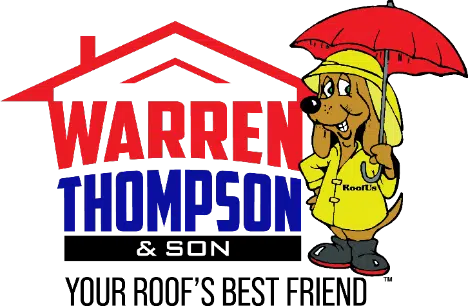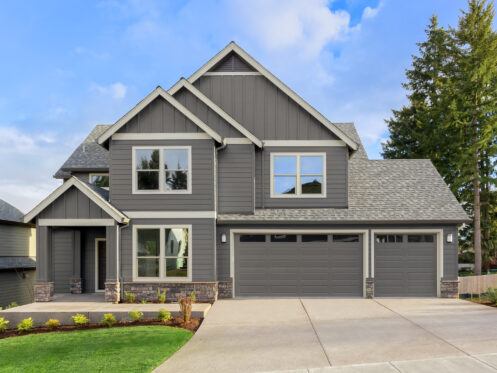Whether you’re building a new home or choosing to upgrade your siding, two of the most common siding options include traditional siding and Dutch lap siding. While many homes are made with traditional vinyl siding, Dutch lap siding has become increasingly popular because of the groove it has at the top edge. Traditional siding often consists of flat panels that have seams between them. Before you choose a type of siding for your home, you should consider all your options.
What Is Traditional Siding?
Traditional siding is mainly made from vinyl and has a plank width of around 6 to 7 inches. When you select this siding, you’ll discover that the planks appear to overlap one another. The edges of these boards, however, are straight. This type of siding is mainly used in the construction of ranch-style, historic, and Colonial homes.
What Is Dutch Lap Siding?
Dutch lap siding is a unique type of siding that was once made entirely of wood but now consists of vinyl. These panels are comprised of a sharp bevel, which creates a substantial contrast between each plank. The siding also has deep grooves that bring about a subtle shadowing effect.
Dutch lap siding can be used with many architectural styles. However, it’s ideal when paired with Greek revival and Victorian buildings.
Design Differences
Traditional siding and Dutch lap siding use narrow planks that are placed horizontally over the home’s exterior. Both siding options are made from vinyl, which is a thin material that’s easy to install regardless of the panel design. When you’re choosing colors for your siding, both styles come with a wide range of colors, which include everything from green and red to light gray and beige. However, you can improve the appearance of Dutch lap siding by using a lighter color that contrasts well with the shadows. The best colors for Dutch lap siding are light gray, beige, white, and cream.
Since traditional siding doesn’t have shadows, you can paint it a darker color without issue. If you have a home that’s built in the contemporary architectural style, a dark green or blue hue will pair well with traditional vinyl siding. When you have a ranch-style home, consider shades of red or brown.
Thickness Differences
While Dutch lap siding and traditional siding are often made from the same material, Dutch lap siding is usually thicker. If you purchase the wood Dutch lap variety, you can expect to find thicknesses that extend from 1/2 to 3/4 inch. In comparison, the vinyl Dutch lap variety is usually around 0.04-0.05 inches thick.
The more unique fiber cement version of Dutch lap is around 5/16 to 7/16 inches thick. Keep in mind that thicker siding can provide your home with more insulation. Even though traditional siding is usually thinner than any Dutch lap varieties, it’s often paired with coatings and treatments that add thickness to the material to make it more weather resistant.
Maintenance Differences
Both types of siding have similar maintenance requirements. It is important to maintain the appearance and quality of your home’s siding. To ensure your siding remains in top condition, it’s crucial to get professional maintenance to regularly remove dirt and debris. Additionally, we recommend having professionals stain or paint your siding when needed. This helps preserve its aesthetics and durability. Our team of experts is here to take care of these tasks for you, ensuring your siding looks its best.
While the maintenance requirements for these materials aren’t that different, the grooves that naturally occur with Dutch lap siding make it more difficult for the panels to be cleaned. There may be a considerable amount of dirt in these grooves during your next scheduled cleaning, which is why it might be best to have this type of siding maintained more often.
Durability Differences
Both types of siding can be highly durable, depending on the thickness. The main difference in durability is caused by the type of material you choose. If you’re comparing vinyl Dutch lap siding with traditional vinyl siding, the durability is largely the same.
When you compare fiber cement Dutch lap siding with traditional vinyl siding, the former is more durable. However, fiber cement panels are also available with traditional siding. If you opt for fiber cement siding, you’ll benefit from a higher resistance to fire, pests, and inclement weather, which means that the siding should last longer than other materials.
Installation Differences
Many of the differences between Dutch lap siding and traditional siding are caused by the grooved design of the Dutch lap variety. This is also the case with the installation process. Since Dutch lap siding comes with a curved edge along the top of every board, the installation process is slightly more complex. When you hire an installation team to place Dutch lap siding on your home, they’ll need to pay strict attention to making sure that the boards have been properly spaced and aligned.
As for traditional siding, it’s very easy to install. Since the planks don’t directly overlap, it’s much simpler for installers to align them. You can also decide to install both siding options in a vertical or horizontal position depending on the type of appearance you wish to create.
Which Style Is Best?
Both types of siding have their own unique advantages, which is why the most effective way to determine which siding is best for you is by comparing their differences. After making these comparisons, you should be able to identify the siding that fits with your home and matches your preferences. Carefully consider the differences between these sidings before making a decision.
Once you choose siding for your home, give our team a call to have us perform efficient and high-quality installation. At Warren Thompson & Son Roofing & Siding, we understand the importance of siding when it comes to maintaining high curb appeal. Regardless of the type of siding you purchase, we’re able to install it for you and give you suggestions on how to maintain it. If you notice that your siding is damaged following inclement weather, we’ll repair it for you. We also offer roof repair, roof replacement, storm damage repair, and gutter services. Call Warren Thompson & Son Roofing & Siding today to schedule our installation services for your Alpha, NJ home.

